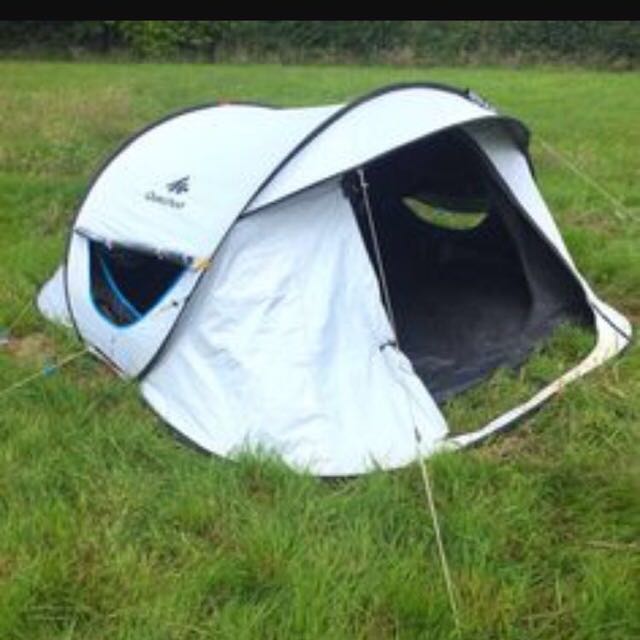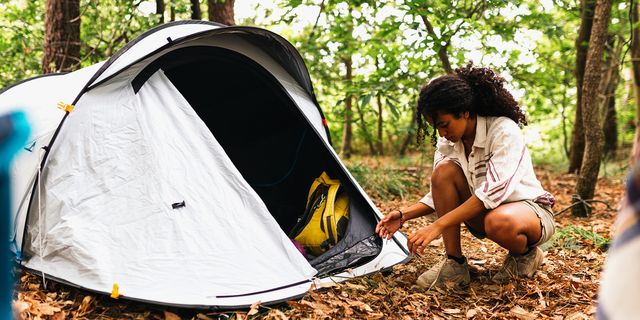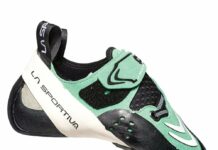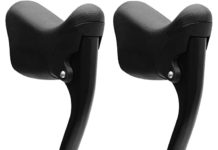As an avid winter camper who has tried many so-called “4-season tents”, I’ve learned the hard way what features really make a tent built for the challenges of winter.
A quality 4-season tent means the difference between an epic adventure and a miserable experience battling the elements.
In this article, I’ll share my top tips on what defines a true 4-season tent sale so you can invest in the right gear.
Use a Freestanding Dome Design
The ideal winter tent has a strong, freestanding dome structure that sheds snow and wind easily.
Models with lots of fixed guylines don’t work as well since the lines get buried. I prefer tents with just a few anchor points to secure them.
My go-to is the Mountain Hardwear Trango 3 tent which has an easy-to-pitch freestanding dome shape.
The updated 2022 model has color-coded poles making setup even simpler. This sturdy geodesic shape gives me confidence it will withstand anything winter throws at it.
Choose a Durable Waterproof Fabric
You want a tent body and fly made of the toughest, most waterproof fabric like silicone-treated nylon ripstop. Inferior quality materials will stretch and sag under the weight of wet snow.
I once bought a budget backpacking tent for winter camping and the rain fly almost collapsed from the snow load!
Ever since then, I only use tents with 40D ripstop silicone nylon like the Mountain Hardwear Trango series. It’s expensive but worth it.
Have a Full Coverage Rain Fly
Look for a tent with a full-coverage fly that extends all the way to the ground. This prevents snowdrifts and rainfall from entering under the tent. Some 3-season tents have fly designs that leave gaps at the bottom.
That’s a recipe for disaster in winter.
I like that the Marmot Thor 3P has a wrap-around fly with vestibules on both sides to store gear out of the elements.
The only openings are protected zippered vents for airflow that prevent interior condensation.
Insist on a Strong Pole System
Weak tent poles will snap like twigs under heavy snow accumulation. A quality 4-season tent should have ultra-strong poles made of materials like DAC Featherlite NSL anodized aluminum.
My Big Agnes Battle Mountain 2 uses oversized poles and pole sleeves to distribute weight evenly.
Despite using it in some gnarly storms, the poles are still going strong after 5 years. Don’t skimp on pole strength!
Have at Least One Big Vestibule
A roomy vestibule is necessary for storing big winter gear outside like boots, packs, and sleds, keeping it dry and the interior clutter-free.
Entryways and vestibules should also be zippered to keep the wind out.
On my Mountain Hardwear Direkt 2 tent, the oversized vestibule has space enough for 2 packs and boots with room to spare.
Multiple interior pockets let me organize hats, gloves, and other essentials right by the door.

Maximize Ventilation Options
Ventilation is key to preventing dangerous condensation buildup inside your winter shelter.
Look for a 4-season tent with vents on the fly plus no-see-um mesh panels on the inner tent body to encourage airflow.
I once made the mistake of winter camping in a basic 3-season tent with no ventilation. The interior dripped with condensation and my sleeping bag got soaked.
Proper ventilation is a must!
Choose a general peak Height
Even with excellent shedding ability, some snow pileup on your tent is inevitable in winter.
To allow ample headroom inside when this happens, look for a peak height of at least 40 inches.
I’m 6 feet tall and need to be able to sit up comfortably inside my Marmot Thor 3P tent. The 43-inch center height gives me space to spare even with mounds of snow on the fly.
Invest in Tough Winter-Weight Fabrics
Thin summer-weight tent materials can crack and tear in freezing temperatures. A 4-season tent uses specialized fabrics like thick, waterproof polyester taffeta floor material.
My trusted Big Agnes Mad House 4 tent has a beefy 105D polyester taffeta floor that shrugs off rough terrain without leaking or ripping.
The sturdy 68D nylon walls can flex with gusts of wind rather than snapping.
Conclusion
Taking your adventures into the colder months requires the right gear, especially when it comes to your shelter.
Don’t cut corners on your tent choice – go with one designed specifically for 4-season use.
Prioritize freestanding strength, weatherproofing, ventilation, and livable space to stay comfortable no matter the conditions.
With a top-quality 4-season tent, you’ll be set for stunning winter escapades year after year.















